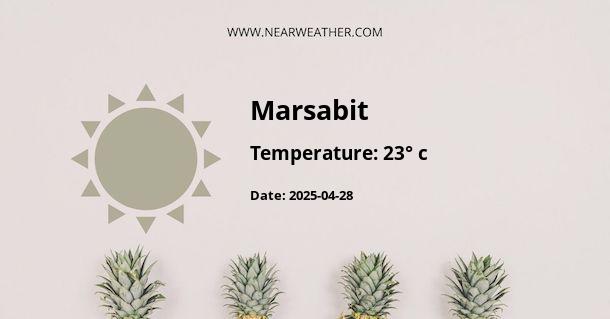Overview
Marsabit is a town located in the northern part of Kenya, serving as the capital of Marsabit County. This region features a unique climate different from most parts of the country due to its high altitude and geographical location, offering fascinating insights into its weather and climatic patterns.
Geographical Location
Marsabit is situated at an altitude of 1,354 meters above sea level, near the Chalbi Desert and Mount Marsabit. The town is positioned at 2.33° N latitude and 37.99° E longitude. These geographical factors significantly influence the climate of Marsabit, making it distinctive from the typical equatorial climate experienced in other regions of Kenya.
Climate of Marsabit
Marsabit experiences a tropical highland climate, also known as a highland or mountain climate, classified under the Köppen climate classification as 'Cwb'. This type of climate is characterized by significant temperature variations between day and night, and a relatively cooler climate compared to the surrounding lowland areas.
Temperature
The average annual temperature in Marsabit is approximately 20.5 °C. The warmest month is generally March, with an average maximum temperature of 28.1°C, while the coldest is July, with a minimum average temperature of 13.9°C. Despite being near the equator, Marsabit's high altitude results in relatively moderate temperatures year-round.
Rainfall
Marsabit receives an annual average rainfall of approximately 800 mm. The rainfall pattern follows a bimodal distribution, with the long rains occurring from March to May and the short rains from October to December. The driest period is typically between June and September.
Weather Patterns Throughout the Year
Marsabit's weather patterns can be broken down into four quarters, each with distinct characteristics.
| Quarter | Characteristics |
|---|---|
| January - March | The first quarter of the year is generally warm, with temperatures peaking in March. Rainfall begins to increase towards the end of March, marking the onset of the long rainy season. |
| April - June | This period marks the peak of the long rainy season, with April often recording the highest rainfall. Temperatures gradually decrease, with June being the coolest month. |
| July - September | The dry season sets in during this quarter. The temperatures remain relatively low in July and begin to rise gradually towards September. |
| October - December | The short rainy season begins in October and extends until December. The temperatures during this period are relatively moderate, creating a pleasant weather condition. |
Conclusion
In conclusion, Marsabit, despite being located near the equator, experiences a unique highland climate due to its geographical location and high altitude. The weather patterns vary throughout the year, with two rainy seasons and relatively moderate temperatures. This information is crucial for anyone planning to visit or conduct activities in Marsabit, as it allows for adequate preparation based on the expected weather conditions.
References
- Climate-Data.org. (n.d.). Climate Marsabit: Temperature, Climate graph, Climate table for Marsabit - Climate-Data.org. Retrieved from https://en.climate-data.org/africa/kenya/marsabit/marsabit-4118/
- World Weather and Climate Information. (n.d.). Climate and average monthly weather in: Marsabit, Kenya. Retrieved from https://weather-and-climate.com/average-monthly-Rainfall-Temperature-Sunshine-in-Kenya-Marsabit
A - Marsabit's Latitude is 2.328390 & Longitude is 37.989861.
A - Weather in Marsabit is 23° today.
A - Climate Conditions in Marsabit shows broken clouds today.
A - Humidity in Marsabit is 54% today.
A - Wind speed in Marsabit is 16.13 km/h, flowing at 144° wind direction. today.
